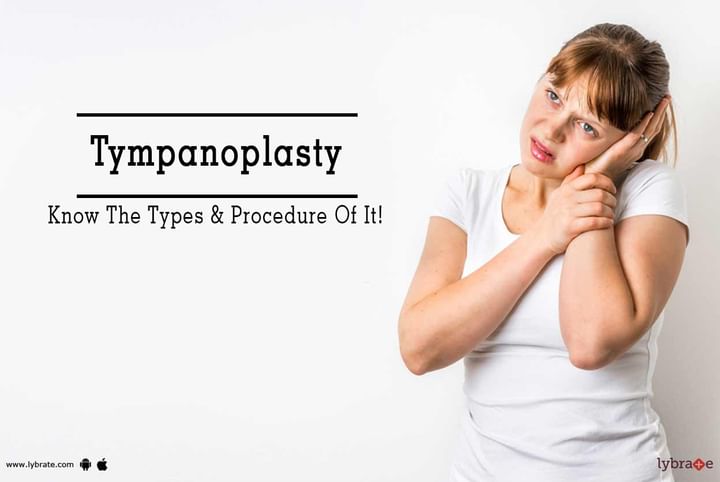Tympanoplasty - Know The Types & Procedure Of It!
Tympanoplasty is a surgical operation for reconstruction or repairing of a perforated eardrum (tympanic membrane) and/or the middle ear bones (ossicles). The purpose is to also improve or restore hearing at the same time. It can be performed under general or local anesthesia. Eardrum might get perforated from chronic infection or from trauma to eardrum.
Types of Tympanoplasty:
These are the following types of Tympanoplasty:
-
Type I Tympanoplasty (Myringoplasty): It involves the restoration of perforated eardrums by grafting with materials like Gelfilm, AlloDerm, Gelfoam, fat, and cigarette paper.
-
Type II Tympanoplasty: It is used for tympanic perforations with malleus erosion and involves grafting onto the incus or remains of malleus.
-
Type III Tympanoplasty: It involves placing a graft onto stapes on destruction of two ossicles and providing protection for the assembly.
-
Type IV Tympanoplasty: Used for ossicular destruction, it involves placing a graft around or onto a stapes footplate.
-
Type V Tympanoplasty: It is used when a footplate of stapes is fixed.
Diagnosis:
A complete physical test is performed along with an audiogram and a history of hearing loss, keeping into consideration of facial weakness or vertigo. Otoscopy assesses the mobility of the tympanic membrane and malleus. A fistula test is recommended in case of dizziness or marginal perforation of the eardrum.
Procedure:
The surgeon must consider the location and size of the perforation when Tympanoplasty is considered.
-
In Type I Tympanoplasty when perforation is small, an incision is made into an ear canal to elevate away and lift the remaining eardrum forward from the bony ear canal, using an operating microscope to see into the ear. If perforation is large or if it is far forward, away from the surgeon’s view, an incision might be performed behind the ear to elevate the outer ear forward, which helps in providing access to perforation.
-
When the perforation is exposed, the remnant is forwardly rotated and the bones are inspected. Scar tissue, if present, is removed with laser or micro hooks.
-
Tissues are taken from the back of the ear, the tragus, or from a vein, then dried and thinned.
-
The graft is supported by placing an absorbable gelatin sponge under the eardrum, then inserted underneath the eardrum remnant, and folded back onto the perforation to provide closure. The sheet is also then placed against the graft which helps to prevent it from sliding out.
-
If it is open from the back, the ears are stitched together with sutures being buried under the skin. A sterile patch is placed outside the ear canal.
Results:
Ninety percent of the time, Tympanoplasty is successful. This surgery relieves pain and removes infection symptoms entirely. Hearing loss is extremely minor or not at all there after it.
Post-Operative Care:
-
It is common to have a discharge from an external ear for a few days after surgery. But if this problem continues, the doctor should be consulted.
-
Don’t touch or remove packing in the ear canal.
-
Keep the ears dry until it heals completely.
-
Don’t lift heavy weights until it heals completely.
-
Avoid flying for a few weeks post-surgery to protect tympanums against fluctuating air pressure.
-
Avoid coughing, straining, blowing nose, and sneezing to avoid dislodging of graft.
Take Away:
Tympanoplasty is performed to repair the eardrum and middle ear. It also improves hearing. Most of the time, the procedure is successful, relieving pain and eliminating infections completely. However, consulting a doctor is always advisable.



+1.svg)
